There must be something in human DNA that makes us want things that aren't good for us. As children, we want junk food. As teenagers, we worship the boy or girl who treats us like dirt. As adults, we buy sport-utility vehicles.
Maybe that's why people want color screens on their palmtops. Color screens aren't as crisp or as easy to read as grayscale screens (which display shades of gray, white and black). Color screens also cut battery life in half and cost twice as much. Yet here we are, clamoring for color screens; according to NPD Intelect, a sales-tracking service, 27 percent of the new palmtops sold last year had color screens, up from 16 percent in 2000.
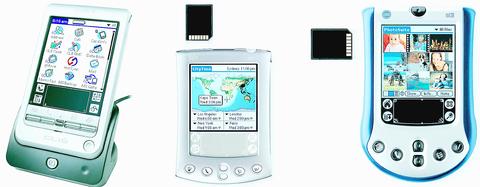
PHOTO: NY TIMES
That percentage will only increase with the arrival of three new color palmtops -- two from Palm, one from Sony -- that run the Palm operating system and any of 15,000 compatible software programs.
Remember the grayscale Palm V? It was a sleek shirt-pocketable little number clad in brushed aluminum, and one of Palm's greatest hits. But as Palm cultists drifted off to sleep each night clutching their Palm V's to their chests, they dreamed of what they imagined to be the ultimate evolution of the palmtop: a Palm V with a color screen.
Last year, Palm delivered. Unfortunately, what it delivered was the Palm m505, which closely resembled the Palm V but had what the company claimed was a color screen. Maybe it was, but the screen was so dim, you couldn't tell. Engineers measure brightness in a unit called nits (the brightness of one candle over one square meter). Apparently whoever chose the m505's screen wasn't so good at nit-picking.
A sheepish Palm scurried back to the drawing board. This week the company unveiled what the m505 should have been all along: the Palm m515. It's exactly the same idea -- a color Palm V -- but this time, the color screen is nice and bright. It also includes a control that lets you turn off the screen's illumination (or set it to half) to save battery power, a feature that the earlier model lacked. (The m505, incidentally, is no longer available. Palm no doubt wasted no time in taking it out behind the barn to put it out of its misery.)
As in show business, politics and romance, good lighting makes all the difference. In the new model, Palm doubled the number of tiny light bulbs (four instead of two) and moved them closer to the perimeter of the screen. As a result, the m515's screen is five times as bright as the m505's -- nits aplenty.
Palm's obvious rival in this category (Expensive Gadgets That Make You Look Cool in Public) is Sony's new, clumsily named Clie PEG-T615C. At 11.81cm by 7.19cm inches, it's taller but narrower than the m515 (11.43cm by 7.87cm); both devices are a half-inch thick. Both are made of brushed metal, come with 16MB of memory, run for about a week per battery charge, employ a protective flip cover and look terrific. Both go for US$400.
But as good as Palm's new screen is, Sony's is better, at least indoors. It has roughly the same brightness as the Palm (which is to say it's fine, but not what you'd call a floodlight). But it has twice the number of dots packed into the same area (twice the resolution), yielding much smoother gradations of color and finer, smoother text. The Palm m515's screen, on the other hand, appears to be composed of much coarser square dots. You would prefer the Palm screen only in sunlight, where it retains slightly higher contrast than the Sony screen.
The Clie comes with a few intriguing extras, including a speaker that can play recorded sounds, not just beeps. It also comes with remote-control software that can operate 20 brands of home-entertainment gear from 15 feet away. Put another way, this palmtop also occupies a second category: Expensive gadgets that make you look cool on the couch.
Overall, most people with US$400 to spend on a little brushed-metal status symbol will prefer the Clie to the new Palm -- but not all of them. Macintosh fans, for example, will be irritated to note that Sony's palmtop still can't synchronize its information with Macs (at least not without a US$30 add-on from www.markspace.com). Both palmtops come with Documents to Go, a remarkable program that lets you read and edit Microsoft Office files on the palmtop -- but only Palm includes the Professional edition of that software, which lets you view and rehearse your PowerPoint slide shows on the palmtop. And the Palm's stylus is longer and more substantial than Sony's.
Palm beats Sony in the accessories game, too. Almost all current Palm models accept stamp-size SD (secure digital) expansion cards, which let you add memory, atlases, electronic books and even Bluetooth short-range wireless features. Sony's palmtops accept only the more expensive Memory Sticks, which, apart from a digital-camera module and an MP3-playback module, add only memory. Finally, no modem of any kind is available for the Clie -- a tough pill for road warriors to swallow.
In the end, though, many people will carefully study these two high-end hand-helds, weigh their pros and cons, pore over their feature charts -- and then ignore them. They'll opt instead for Palm's new m130, which is, in some ways, an even more significant development.
At first glance, the m130 looks just like the other models in Palm's low-cost, round-bottomed m100 line, which the company says has become extremely popular among students and women. Like the previous 100-series models, the m130 offers interchangeable if overpriced faceplates (US$10 to US$20 each), a breakage-resistant plastic screen instead of glass and a flip cover whose little transparent window shows the date and time. And like those of its m100-line predecessors, the m130's screen is a half-inch smaller than other Palm screens, making small text tough for aging eyes to read.
The m130 is the first in this inexpensive series to offer built-in, rechargeable batteries -- and color.
The m130's screen uses yet another lighting technology: It is entirely backlighted, making it even brighter than the US$400 models indoors and producing richer, more vibrant colors. The tradeoff is that in sunshine, it washes out almost completely, making it a poor choice for rugby players and lumberjacks. It is also slow to update the screen image, making it less successful for playing video games.
Still, even with eight megabytes of memory, an SD card slot and the Documents to Go software, the m130 costs only US$280, which makes it the least expensive color palmtop you can buy. You'd pay about twice as much for a Microsoft Pocket PC like the Compaq iPaq, for example, and US$20 more for Handspring's aging eight-megabyte Visor Prism.
All three of these color palmtops, by the way, are available in grayscale models with much better battery life, superior legibility and lower prices.
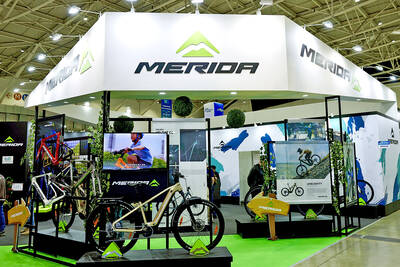
Merida Industry Co (美利達) has seen signs of recovery in the US and European markets this year, as customers are gradually depleting their inventories, the bicycle maker told shareholders yesterday. Given robust growth in new orders at its Taiwanese factory, coupled with its subsidiaries’ improving performance, Merida said it remains confident about the bicycle market’s prospects and expects steady growth in its core business this year. CAUTION ON CHINA However, the company must handle the Chinese market with great caution, as sales of road bikes there have declined significantly, affecting its revenue and profitability, Merida said in a statement, adding that it would
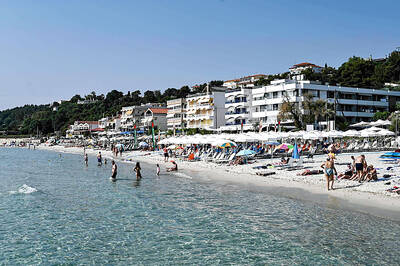
Greek tourism student Katerina quit within a month of starting work at a five-star hotel in Halkidiki, one of the country’s top destinations, because she said conditions were so dire. Beyond the bad pay, the 22-year-old said that her working and living conditions were “miserable and unacceptable.” Millions holiday in Greece every year, but its vital tourism industry is finding it harder and harder to recruit Greeks to look after them. “I was asked to work in any department of the hotel where there was a need, from service to cleaning,” said Katerina, a tourism and marketing student, who would
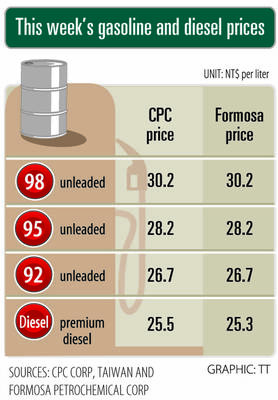
i Gasoline and diesel prices at fuel stations are this week to rise NT$0.1 per liter, as tensions in the Middle East pushed crude oil prices higher last week, CPC Corp, Taiwan (台灣中油) and Formosa Petrochemical Corp (台塑石化) said yesterday. International crude oil prices last week rose for the third consecutive week due to an escalating conflict between Israel and Iran, as the market is concerned that the situation in the Middle East might affect crude oil supply, CPC and Formosa said in separate statements. Front-month Brent crude oil futures — the international oil benchmark — rose 3.75 percent to settle at US$77.01
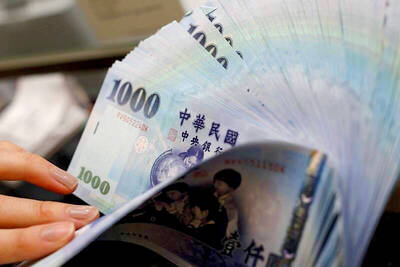
RISING: Strong exports, and life insurance companies’ efforts to manage currency risks indicates the NT dollar would eventually pass the 29 level, an expert said The New Taiwan dollar yesterday rallied to its strongest in three years amid inflows to the nation’s stock market and broad-based weakness in the US dollar. Exporter sales of the US currency and a repatriation of funds from local asset managers also played a role, said two traders, who asked not to be identified as they were not authorized to speak publicly. State-owned banks were seen buying the greenback yesterday, but only at a moderate scale, the traders said. The local currency gained 0.77 percent, outperforming almost all of its Asian peers, to close at NT$29.165 per US dollar in Taipei trading yesterday. The